A Watershed Moment in My Dyeing Evolution
9/23/19, 9:39 AM
By: Julie Rockefeller
Family Farm Day (August 24th) was a watershed moment for me as a dyer. A friend had given Diane and me some japanese indigo (persicaria tinctoria) seedlings in the spring and now was the time to harvest the leaves from the mature plants. I dec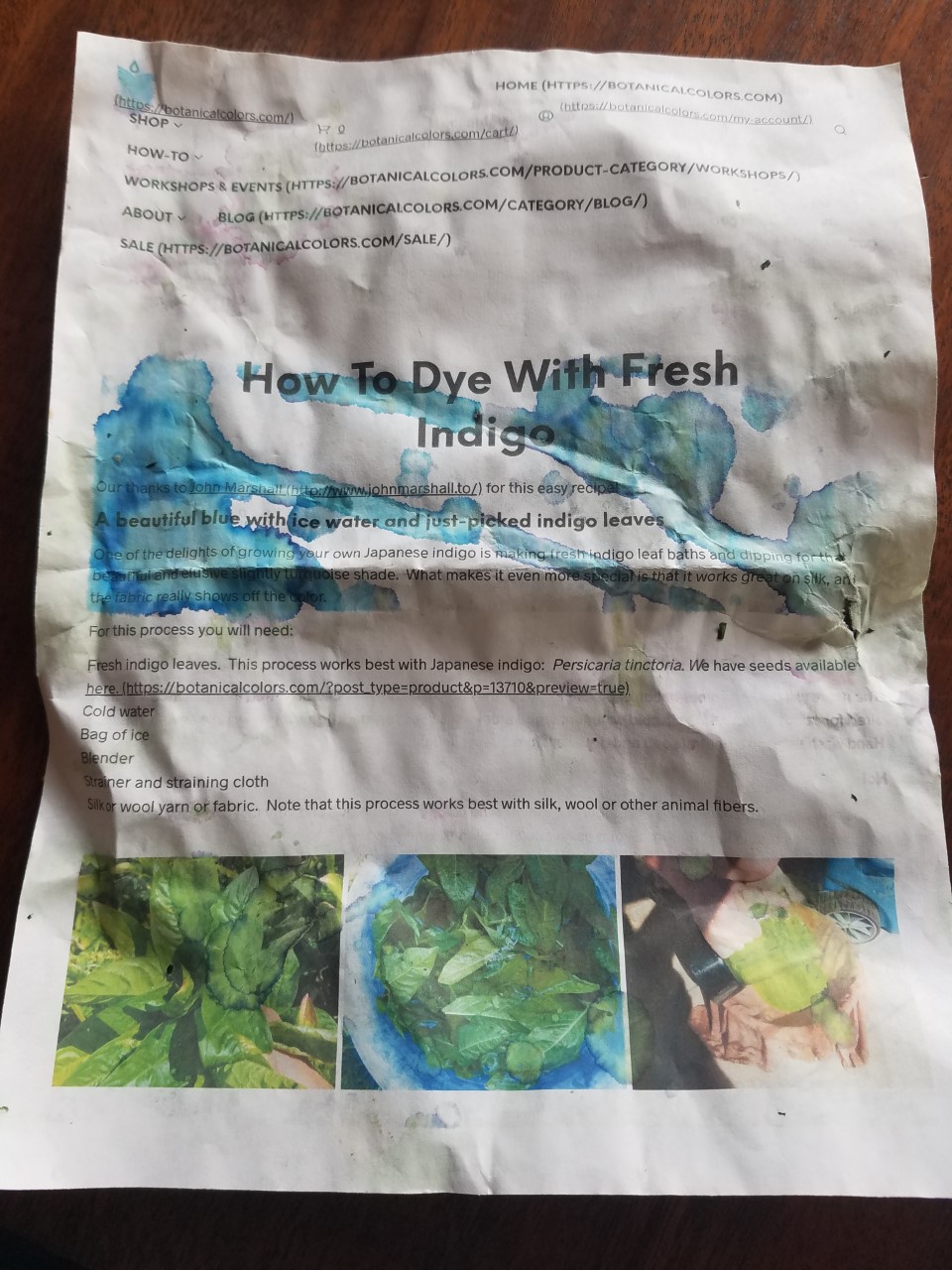 ided to follow the method described on the Botanical Colors website, and to make this experiment into a demonstration on Family Farm Day.
ided to follow the method described on the Botanical Colors website, and to make this experiment into a demonstration on Family Farm Day.
This method of dyeing requires no heat under the dye pot uses very little water in the dye bath. The harvested stems are stripped of leaves, the leaves soaked for a bit in an ice water bath and then pureed. The pre-mordanted yarn is soaked in the bath for some (variable) time, then rinsed 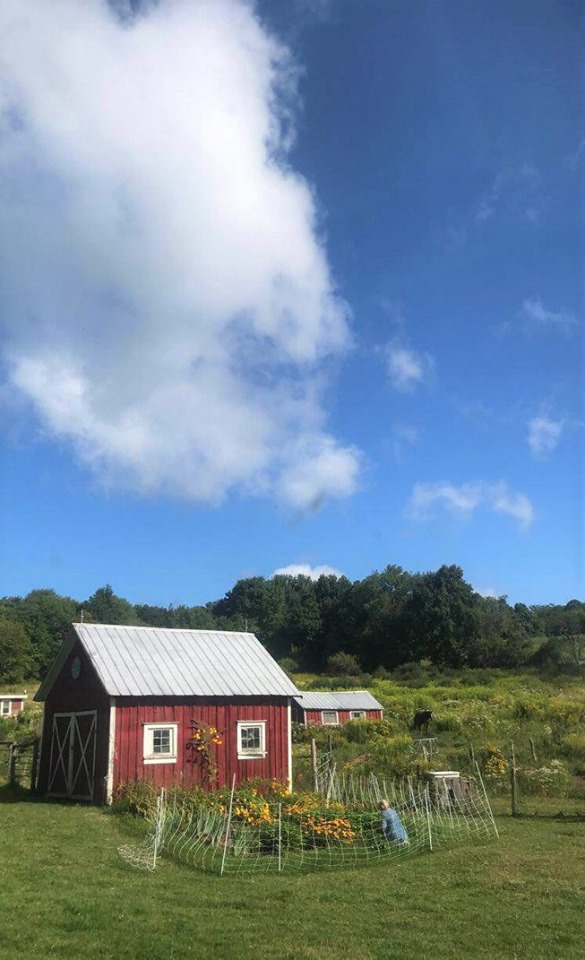 and hung to dry. I was able to complete this process in the carriage house, engaging with visitors all the while - but first I went to the dye garden and harvested the stems from 2 of our 9 japanese indigo plants, which had grown to a height of 24" or so by then, with some leaves tinged quite darkly purple. Photo credit: Marina Bardash
and hung to dry. I was able to complete this process in the carriage house, engaging with visitors all the while - but first I went to the dye garden and harvested the stems from 2 of our 9 japanese indigo plants, which had grown to a height of 24" or so by then, with some leaves tinged quite darkly purple. Photo credit: Marina Bardash
It was fun to do something so creative (and messy!) in the company of others, and fun not to know exactly what might happen in the process. I wish I had photos of all the folks who lent a hand -- stripping leaves, replenishing the ice bath, running the blend er -- and all the folks who stood and talked, asking good questions and offering good suggestions. Next time I need to do better with this, because the photos I took make it seem as if I was there all alone.
er -- and all the folks who stood and talked, asking good questions and offering good suggestions. Next time I need to do better with this, because the photos I took make it seem as if I was there all alone.
I dyed 3 skeins of yarn that day: 1 of our natural white romney wool, 1 of our natural "oatmeal", and 1 that I had previously dyed yellow with dandelion flowers. Th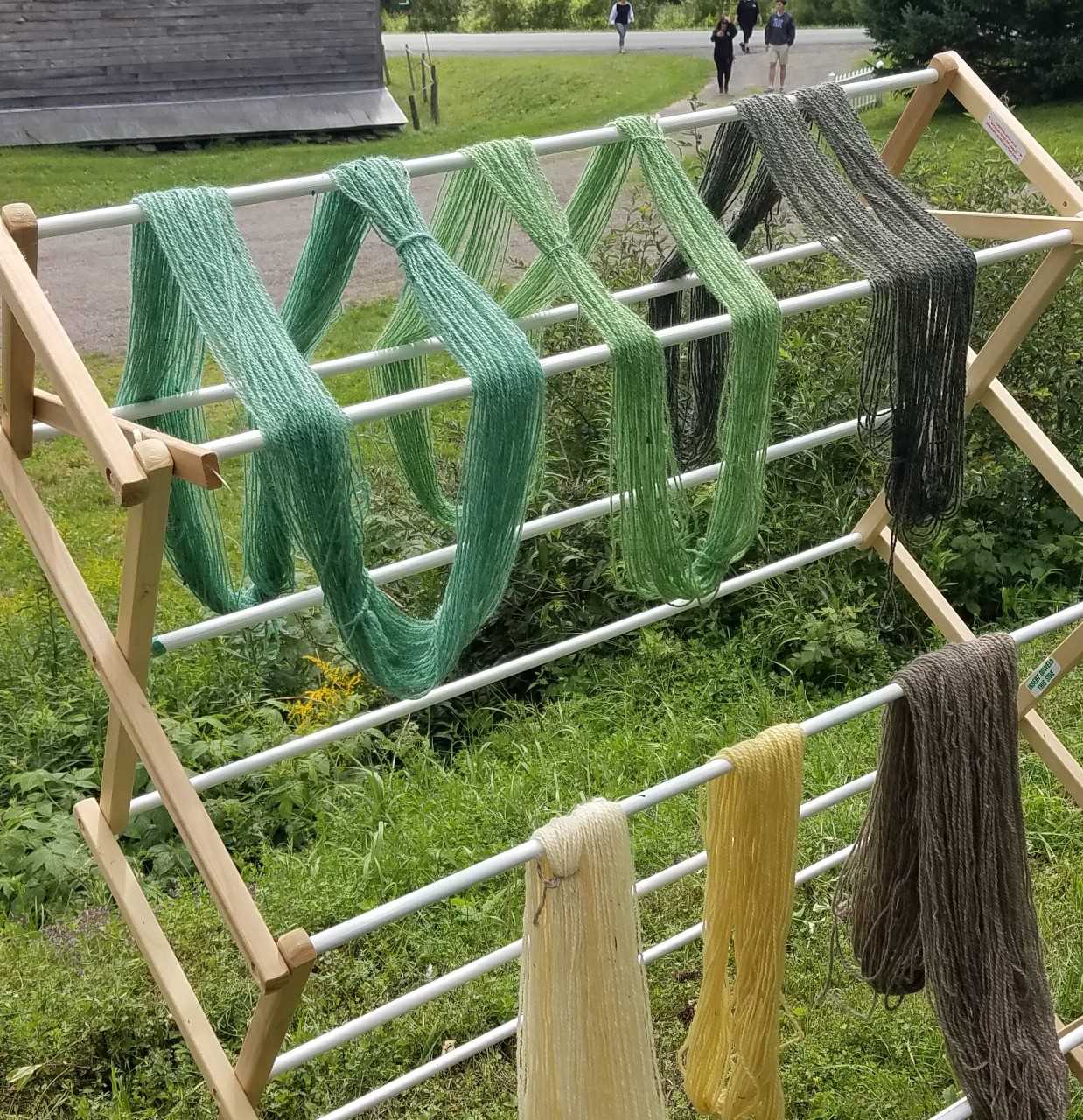 e results were beautiful, though this ice water method does not produce the dark "indigo" blue that most people think of when they hear that name.
e results were beautiful, though this ice water method does not produce the dark "indigo" blue that most people think of when they hear that name.
Many people who stopped by before the experiment was completed wanted to know what happened. I posted the results on Facebook, and brought the dyed skeins with me to the farmers market and other public places so that people could see. I enjoyed sharing the whole process with lots of people, and I learned new things in the sharing - - I couldn't have asked for a better experience.
But. There were 7 plants still unharvested, a LOT more than what I had done that day, and autumn was approaching fast. I had some concern that I would not get the plants harvested for use before the first frost, as our growing season here is short. This plant is perennial in some zones, but not here in the Great Western Catskills of Delaware County.
So I cleared a day on my calendar to devote to the process and created a dyeing studio on my deck -- because this process is too messy for my kitchen. This time I decided to strain the leaves out of the dye bath prior to soaking the yarns because it had taken a lot of water and time to rinse the leaf bits from the yarn afterward. That was a good decision, except that I didn't wear gloves because no other dye stuff I used previously had stained my hands, so I expected that the pigment would wash off my hands at the end, but no. I did this dyeing on Septembe r 1st and some of my fingernails are still dark blue.
r 1st and some of my fingernails are still dark blue.
I dyed many skeins that day -- and into the next day -- with this big dye bath, experimenting with dying over other colors achieved with other plants, as well as dyeing over our natural white and oatmeal yarns. The results truly expanded our palette, producing some lovely, deep colors in addition to the teals and grays and greens I had achieved on Family Farm Day.
I say that this experience was a "watershed moment" because it was the first time I had dyed without heat, and the first time that I began talking to others about the fact that adding color to fabric requires a lot of energy and resources -- and I am not talking about my own energy or the dye stuff. It takes a lot of heat and water to dye fabric. In my case, I use my propane stove to heat the dye pot and water from my well. Because I use natural dye stuffs and a simple mordant, the waste water is not harmful to dispose of, but still it is expensive in terms of the cost to the planet -- and I am a very small (tiny, tiny) scale dyer.
And there is also the fact that many of the plants that I use are not native species, some are invasive....
As always, the more I learn, the more I need to learn.
In the ensuing month, I have experimented with cold water dyeing with plants that I had previously used heat to dye, tried some new materials with cold water, and some new materials with hot water. I have also gone back to materials that I previously had only dyed over our white yarn and tried dyeing the oatmeal.
Black beans with cold water produced a mint green. Aronia berries with hot water created beautiful purples. Goldenrod with hot water over oatmeal yarn resulted in gorgeous greens. Japanese indigo with hot water made a golden brown. Yellow onion skins in cold water and sun produced a lovely gold over 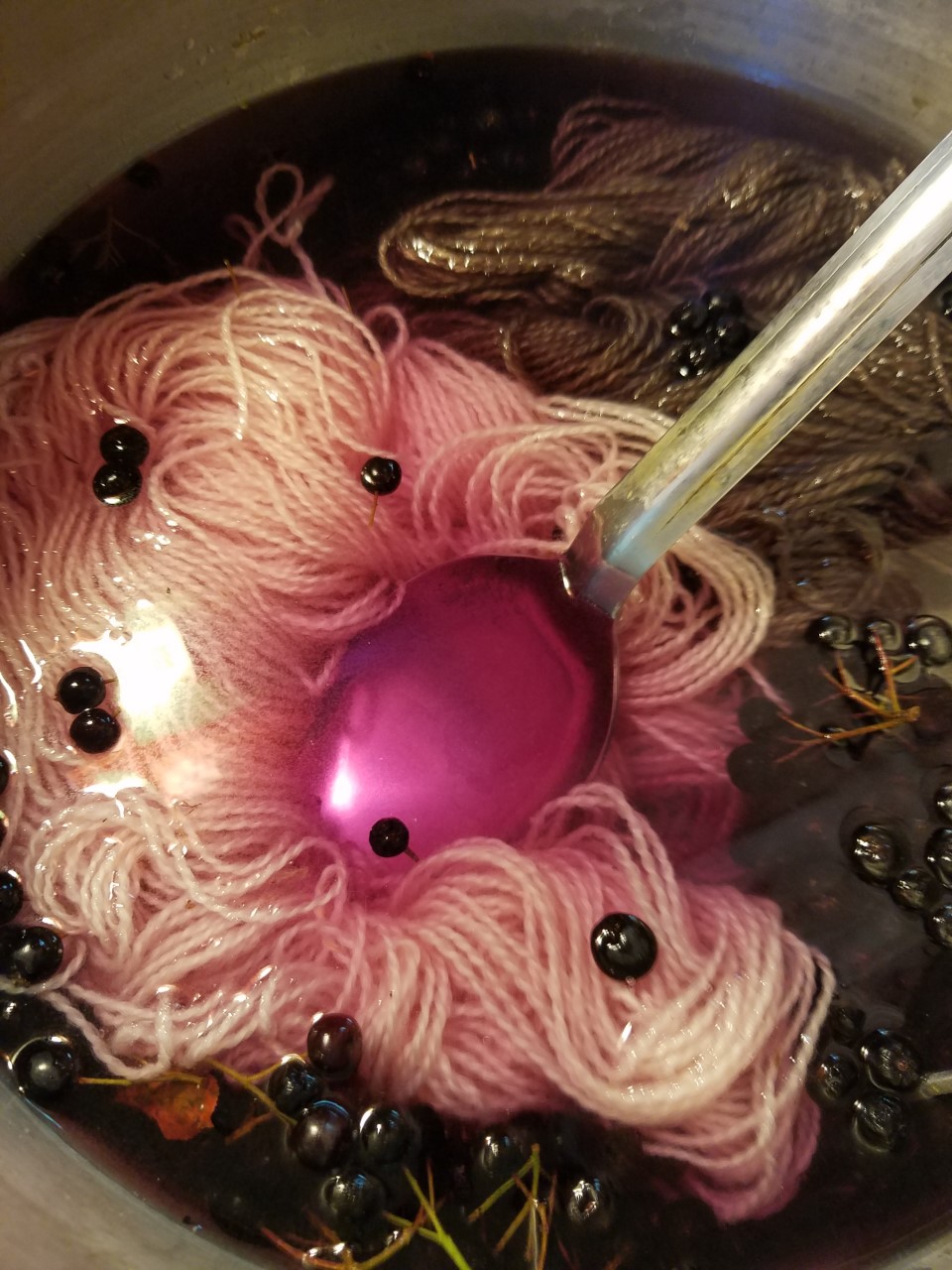
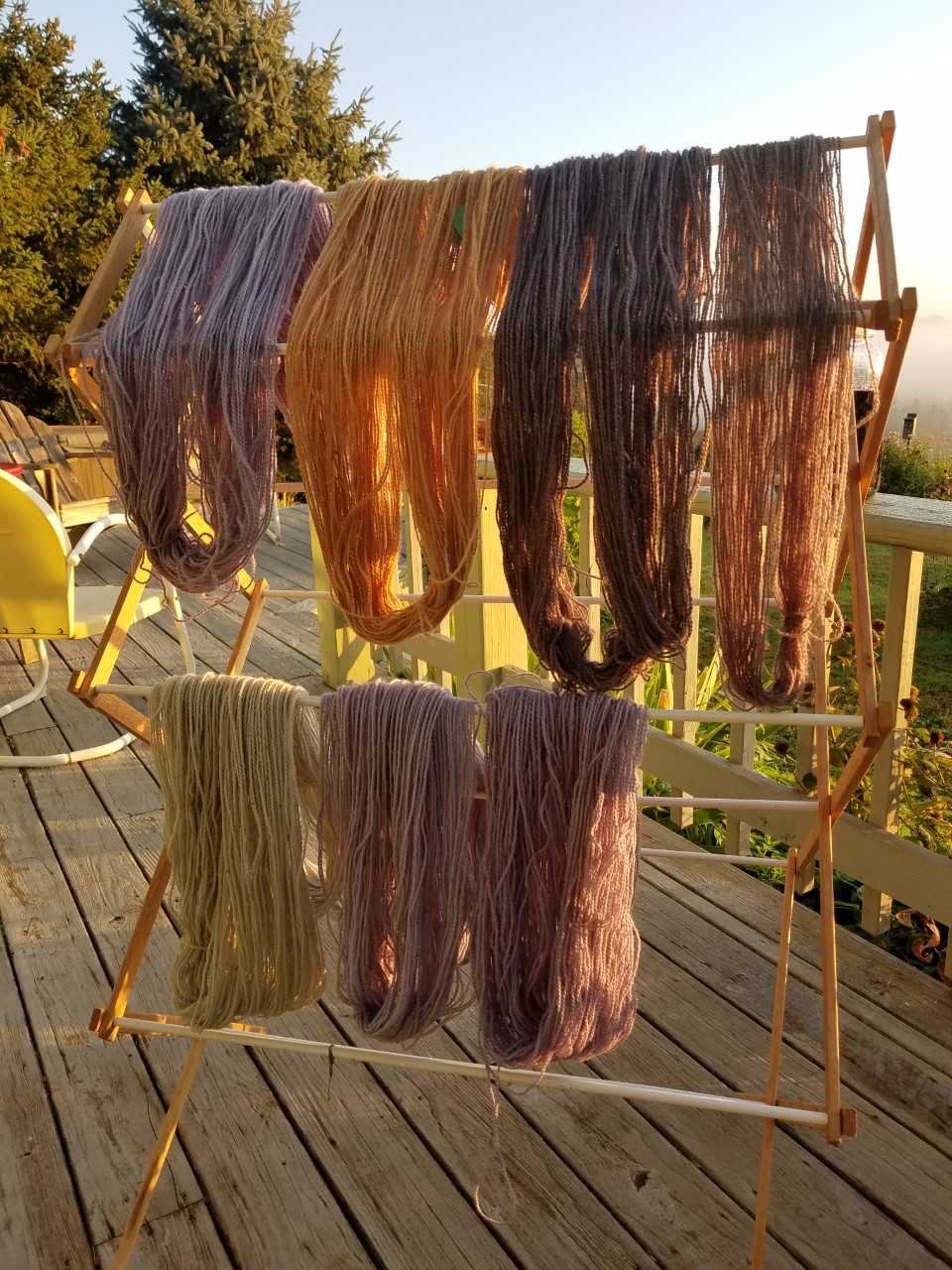 white and green over oatmeal.
white and green over oatmeal.
I keep track of each dye bath in a notebook. A sample swatch attached to an index card describing the process used.
It is important to me that we increase our palette, that we make beautiful naturally colored yarns. This we are doing now and I see that the possibilities are limitless.
More importantly, though, I want to understand the biology, the botany, the chemistry. Not just what happens in the dye, but why it happens. And I want what I do as a dyer to be wholly sustainable.

